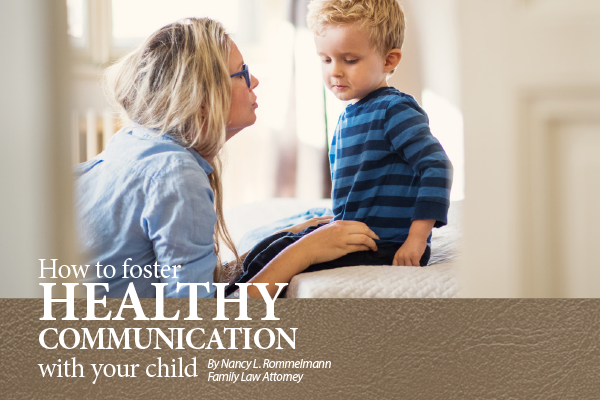By Nancy L. Rommelmann – Family Law Attorney
Active listening requires a verbal response containing no actual message from the parent but rather a mirroring back of the child’s previous communication.
DO:
Look at a child at their eye level – Don’t bend over to talk to a child. Do bend from your knees so your face is level with the child’s face. This lets a child know that what they are saying is important to you. It helps you focus on what a child is saying. It allows you to view a child’s facial expression. A child’s nonverbal cues uncover critical information about emotional needs which is a vital part of what your child is trying to tell you, particularly with younger children.
Validate your child’s feelings – For example, if a child says “Timmy” made me mad because he pushed me.” then: Ask the child why they feel the way they do – without imposing your opinion/judgment; and
let them tell about the event including feelings of anger or hurt. Do NOT invalidate their feelings. Be available when your child wants to talk, not when it’s convenient for you – for teenagers it’s usually late at night. Be there to listen.
Don’t:
Make suggestive negative comments – like “that must have really hurt your feelings!” You might be surprised by the response that a child might respond positively: “It made me feel good because my friends took up for me” or “It made me feel good because “Timmy” jokes around with kids he likes.” Make global statements like “you should never get mad at anyone” or “Timmy is a nice boy, how could he make you mad?” or THE worst, “you must have done something to make him mad!” This invalidates your child and over time your child will not share their feelings with you.
A child deserves to be truly heard and validated. Be effective and caring in communicating with a child. “The biggest communication problem is we do not listen to understand. We listen to reply.


